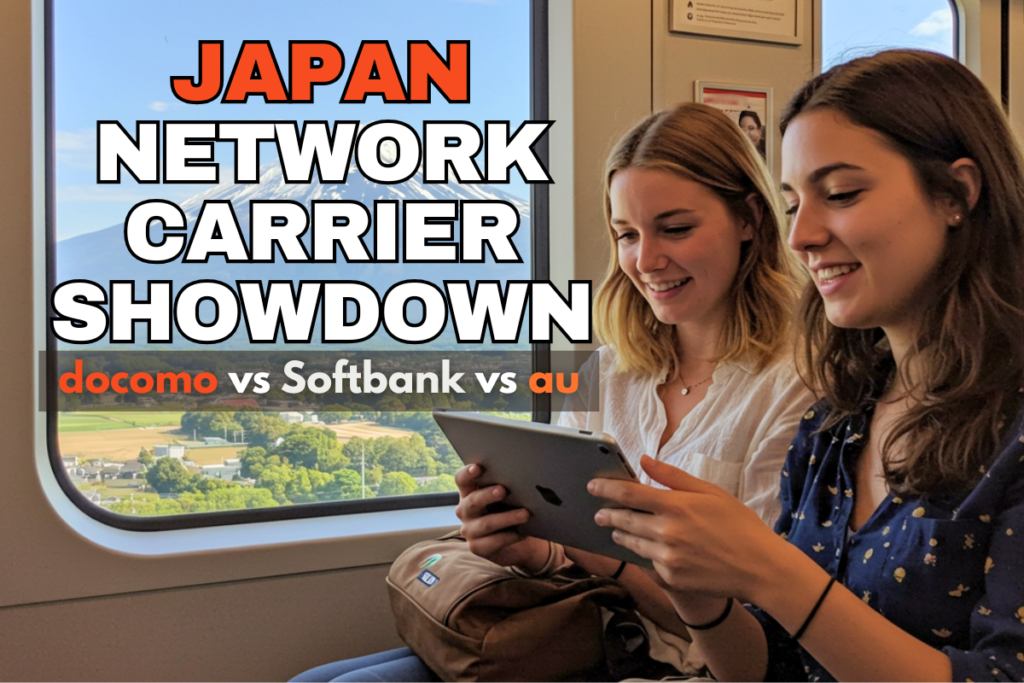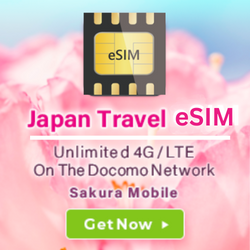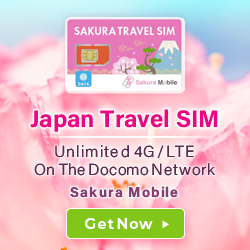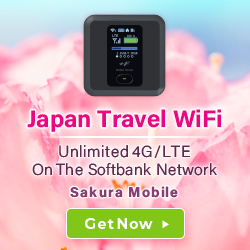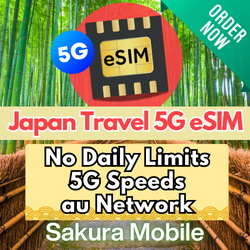When traveling in Japan, staying connected is key. Whether you’re navigating the city, using translation apps, booking reservations, or just keeping up with social media, reliable mobile data is essential. Many tourists rely on data roaming, but it often comes with high fees or unpredictable service, leaving you scrambling to find a better option.
This article is here to help you find the best mobile data solution for your trip. We’ll focus on coverage and convenience so you can make an informed choice that keeps you connected without the stress.
Table of Contents
1) Understanding Japan’s Mobile Networks in 2025
2) Best Option for Tourists: Local SIM, eSIM vs Pocket WiFi vs Roaming
3) Coverage Breakdown by Location (2025 Update)
– Tokyo
– Kyoto
– Mt. Fuji
– Itsukushima Shrine (Hiroshima Prefecture)
4) Why Sakura Mobile Is a Smart Choice for Travelers
5) Final Tips Before You Choose
Understanding Japan’s Mobile Networks in 2025
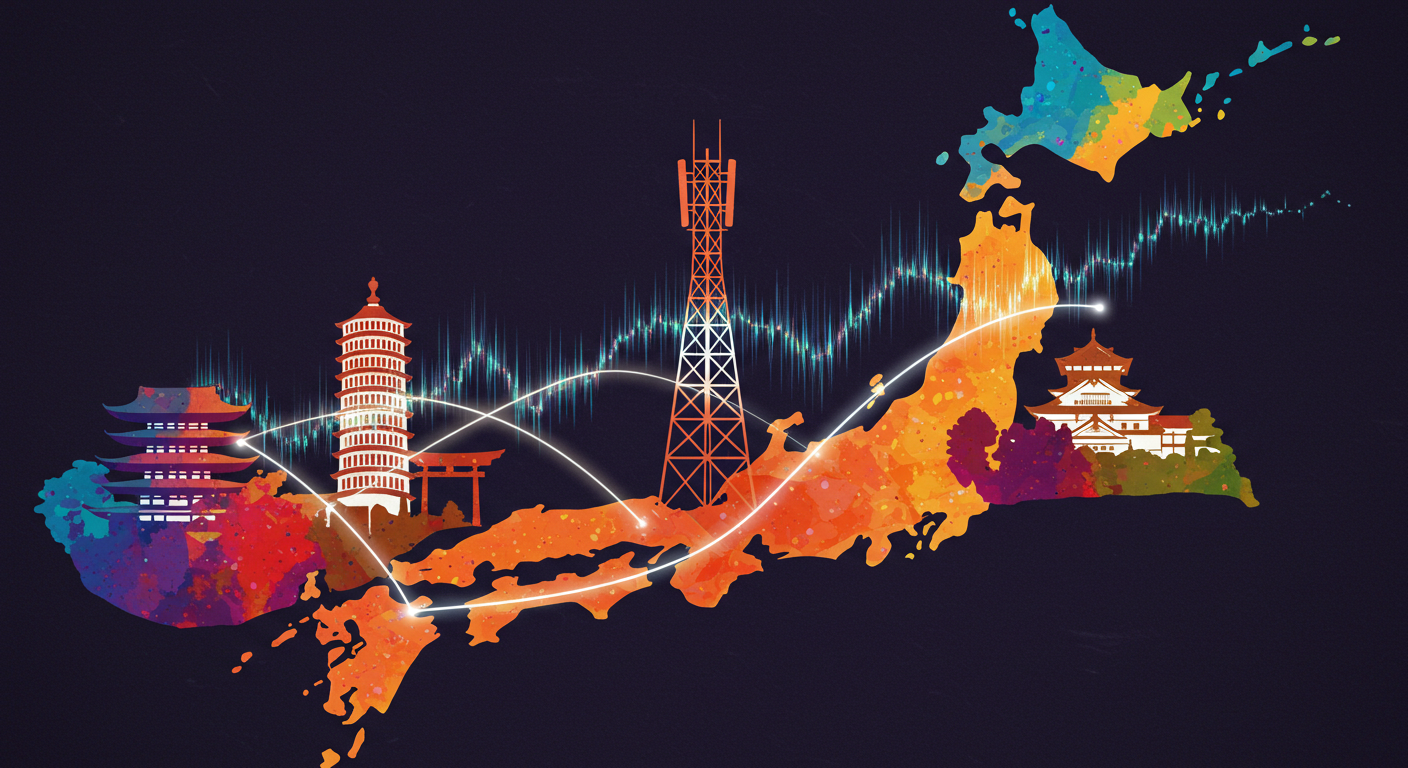
In 2025, Japan’s mobile networks are more robust than ever, with docomo, Softbank, and au by KDDI leading the pack. These three networks serve most of the country, powering both major carriers and smaller MVNOs (Mobile Virtual Network Operators) like Sakura Mobile.
An MVNO, or Mobile Virtual Network Operator, is a company that provides mobile phone services without owning its own network. Instead, it buys network access from bigger carriers like docomo and resells it to customers. This allows MVNOs to offer competitive plans and prices while still using the same reliable networks. Basically, they’re the middleman between the large networks and customers, offering flexible plans with potentially lower costs.
・docomo is still the leader in terms of nationwide coverage, especially in rural and remote areas. It boasts nearly 70% 5G coverage, meaning you can get fast internet in many major cities, as well as in the countryside.
・Softbank has been catching up with its own 5G rollout, focusing more on urban areas. While it’s strong in cities like Tokyo and Osaka, its rural coverage can be spotty.
・au by KDDI is expanding its 5G coverage and provides reliable service, especially in cities. While its signal may not be as strong in some remote areas compared to docomo, it still offers solid performance where you need it most.
While all three networks have made big strides in expanding their coverage, docomo still holds the edge when it comes to rural coverage and reliability in tourist-heavy areas. Plus, docomo’s widespread 5G availability makes it a top choice for travelers who want fast data speeds. As an MVNO, Sakura Mobile runs using both the docomo network for its 4G plans and now au’s network for 5G plans. Taking into account that it offers English customer support and requires no long-term contract, it’s a match made in heaven!
Here’s a quick comparison of the Big Three networks:
Feature | docomo (Used by Sakura Mobile) | Softbank | au by KDDI (Used by Sakura Mobile) |
|---|---|---|---|
| Overall Coverage | ✅Best nationwide—99% of the population | ✅Good in cities | ✅Good in cities |
| Rural Coverage | ✅Widest reach—Strong even in remote areas | ⚠️Limited in rural regions | ✅Expanding coverage in rural areas |
| 5G Availability | ✅Widely available—Nearly 70% nationwide Note: Sakura Mobile uses au for 5G bands, not docomo. | ✅Expanding in Cities | ✅Expanding in cities and rural areas |
| Subway/Underground | ✅Stable in most areas—Best underground coverage | ✅Good in Tokyo subways | ✅Solid coverage in major areas |
| Mt. Fuji Coverage | ✅Full LTE during climbing season | ✅Seasonal LTE | ✅5G on certain parts of summit during climbing season |
| Tourist Hotspot Reliability | ✅Strong in major sites | ⚠️Weak in rural areas | ✅Good coverage in popular tourist areas |
Insider Tip: Sakura Mobile runs on docomo’s network for SIM cards, which means you get great coverage and reliable service. For pocket WiFi, we use Softbank’s network, which offers solid service across Japan. Plus, with our new eSIM plans using au’s 5G network, you can enjoy even faster speeds and wider coverage in cities and beyond.
All three networks are good choices, but knowing which works best for your needs can make all the difference.
Best Option for Tourists: Local SIM, eSIM vs Pocket WiFi vs Roaming
When it comes to staying connected in Japan, you’ve got a few options: international roaming, a Japanese SIM card, or pocket WiFi. Here’s a quick breakdown.
・International Roaming
Roaming can be expensive and might not offer the best coverage or speeds in Japan. Not to mention, you’ll have limited support, and it can drain your battery faster.
📉 Conclusion: Usually not the best value
・Japanese SIM Cards
SIM cards provide reliable coverage and are ideal for solo travelers. All you need to do is make sure your phone is unlocked.
🔗 Check out our guide to choosing the best SIM card.
・eSIM
eSIM is a convenient and flexible option for travelers with compatible devices. You can easily activate a plan without needing a physical SIM card, and our new eSIM plans using au’s 5G network offer fast speeds and coverage in both cities and rural areas.
🔗 Learn more about our eSIM options.
・Pocket WiFi
Pocket WiFi is great for groups or heavy data users, offering unlimited data across multiple devices. Make sure you keep it charged, in any case.
🔗 Find out more about pocket WiFi plans
↑ Go back to the table of contents
Coverage Breakdown by Location (2025 Update)
When traveling in Japan, reliable data is your lifeline—especially outside the major cities. Here’s how the major networks perform in four of the most popular destinations for international travelers.
🏙️ Tokyo – Best for Fast 5G and Subway Access
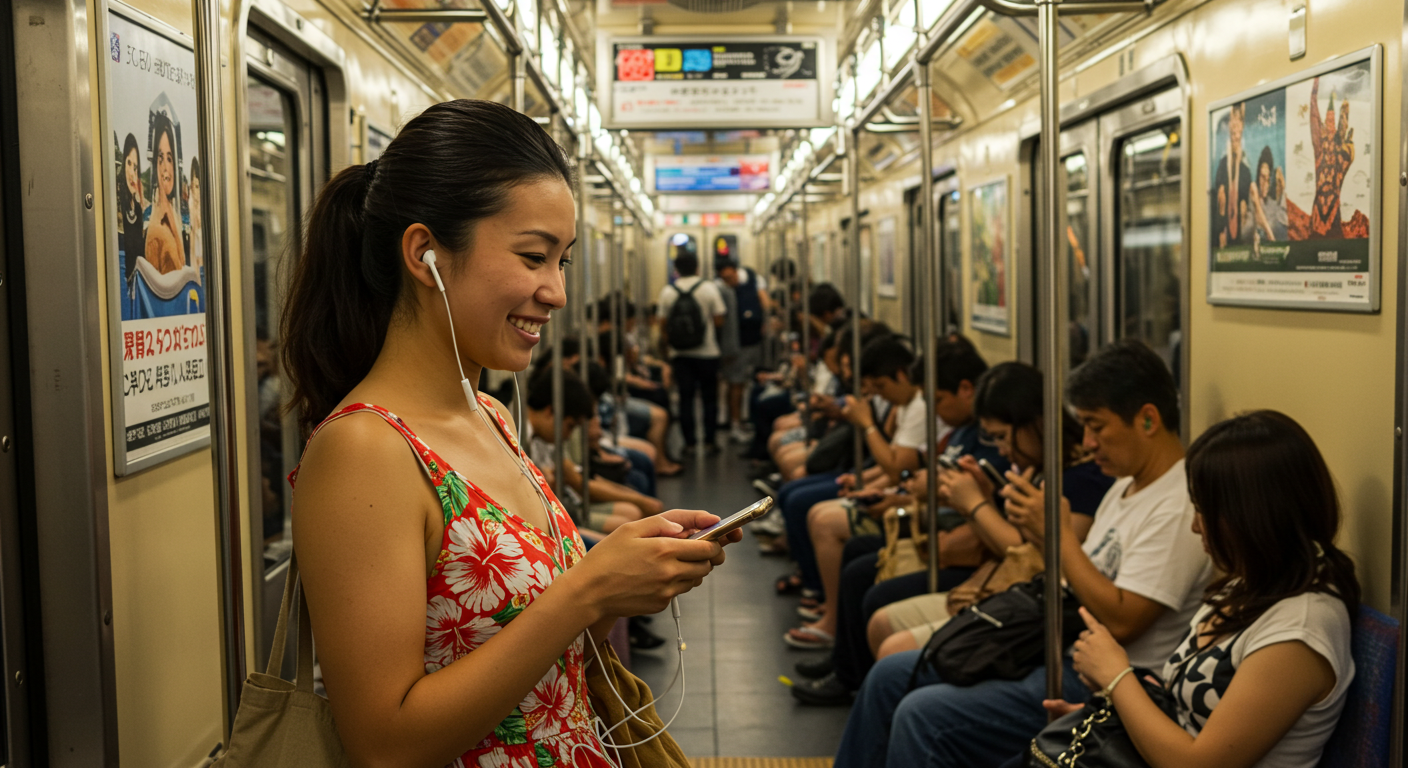
In Tokyo’s bustling areas, all three carriers offer strong LTE coverage and are expanding 5G. However, docomo delivers the most consistent signal, especially in busy neighborhoods like Asakusa, Roppongi, and Shibuya. It’s also your best option for Tokyo’s subway system, where you’ll need a stable connection to navigate underground or stay connected while on the move. If you plan on hopping on the Yamanote Line, exploring small alleyways in Harajuku, or streaming a video on the go, docomo is the most reliable choice.
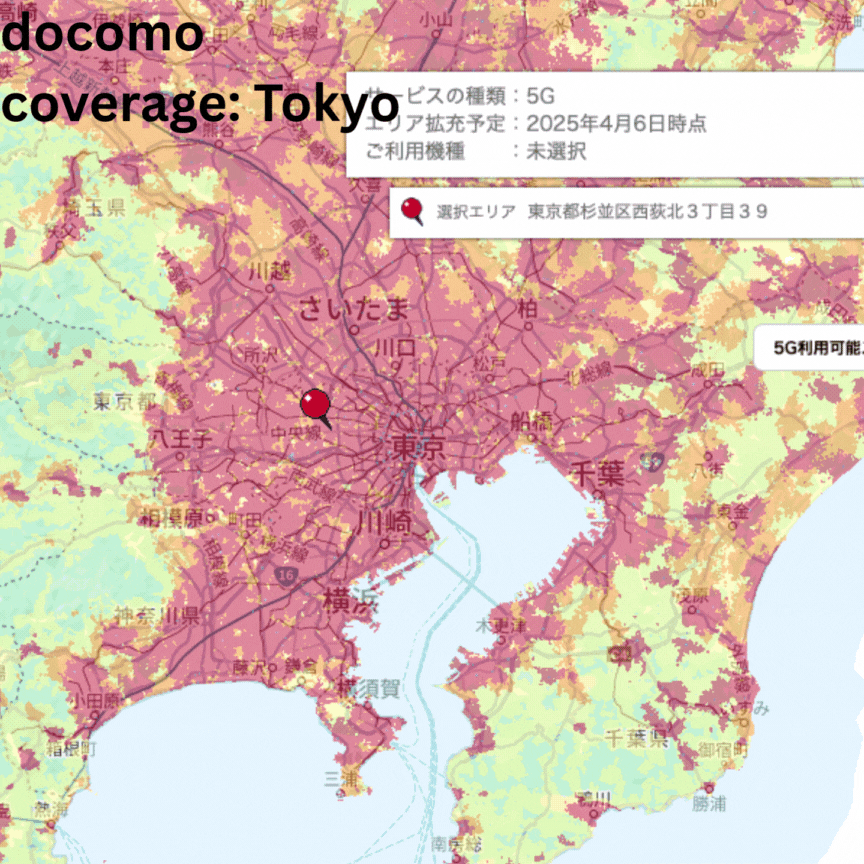
↑ Go back to the table of contents
🛕 Kyoto – Beautiful, but Signal Can Be Patchy
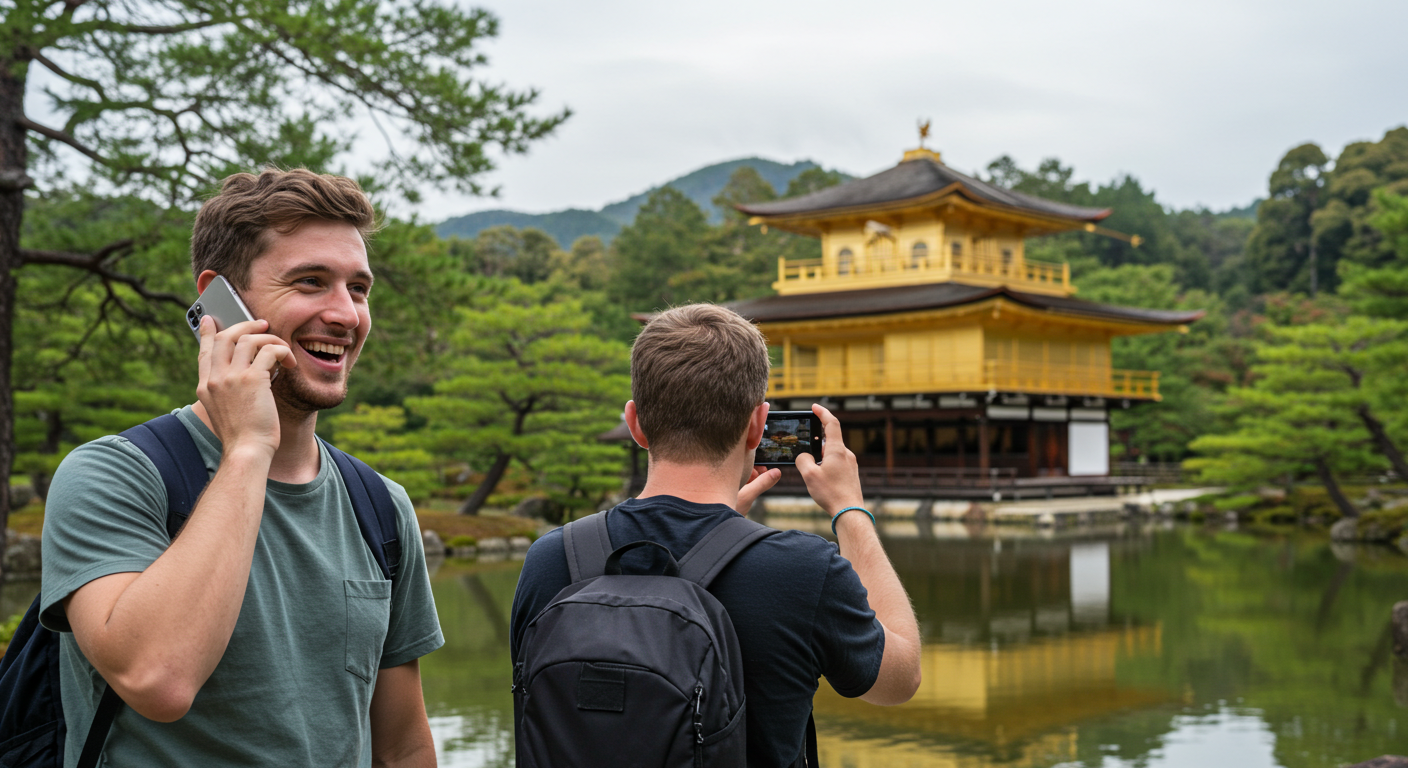
Kyoto’s mix of temples, shrines, and nature can make coverage a bit tricky. docomo offers the best service, particularly around top spots like Fushimi Inari, Arashiyama, and the historic Gion district. These areas are popular with tourists, and docomo provides solid coverage for navigating through the crowds and capturing all the beauty Kyoto has to offer. In more rural locations, such as near Kiyomizu-dera or the Philosopher’s Path, Softbank and au can struggle to maintain a good signal.
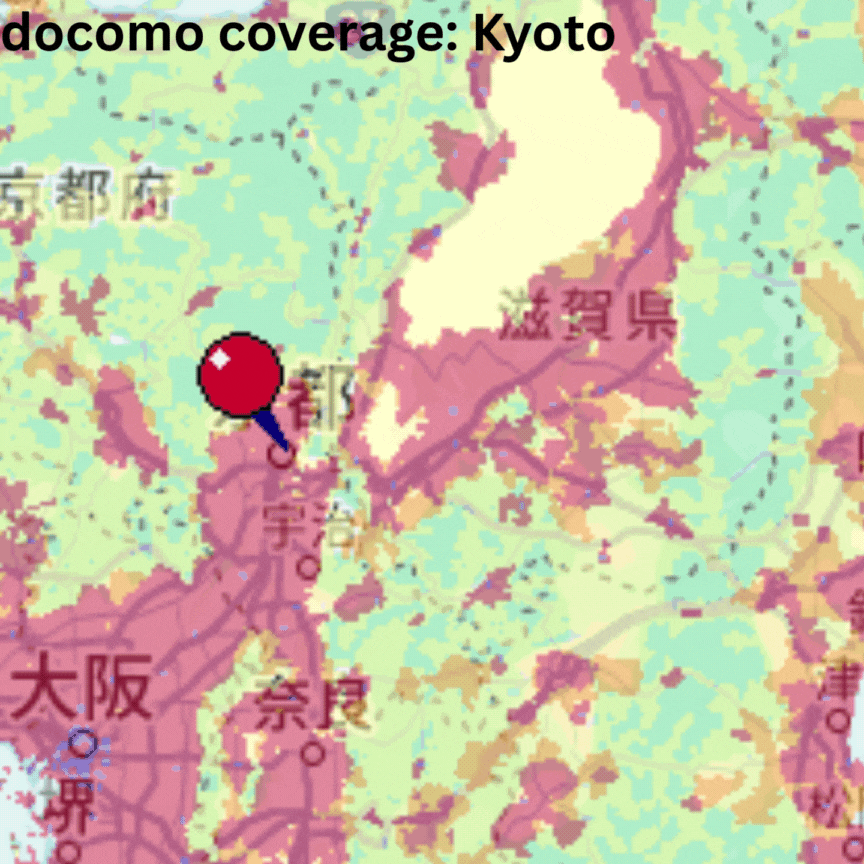
↑ Go back to the table of contents
🏔️ Mt. Fuji – Coverage Where You Least Expect It
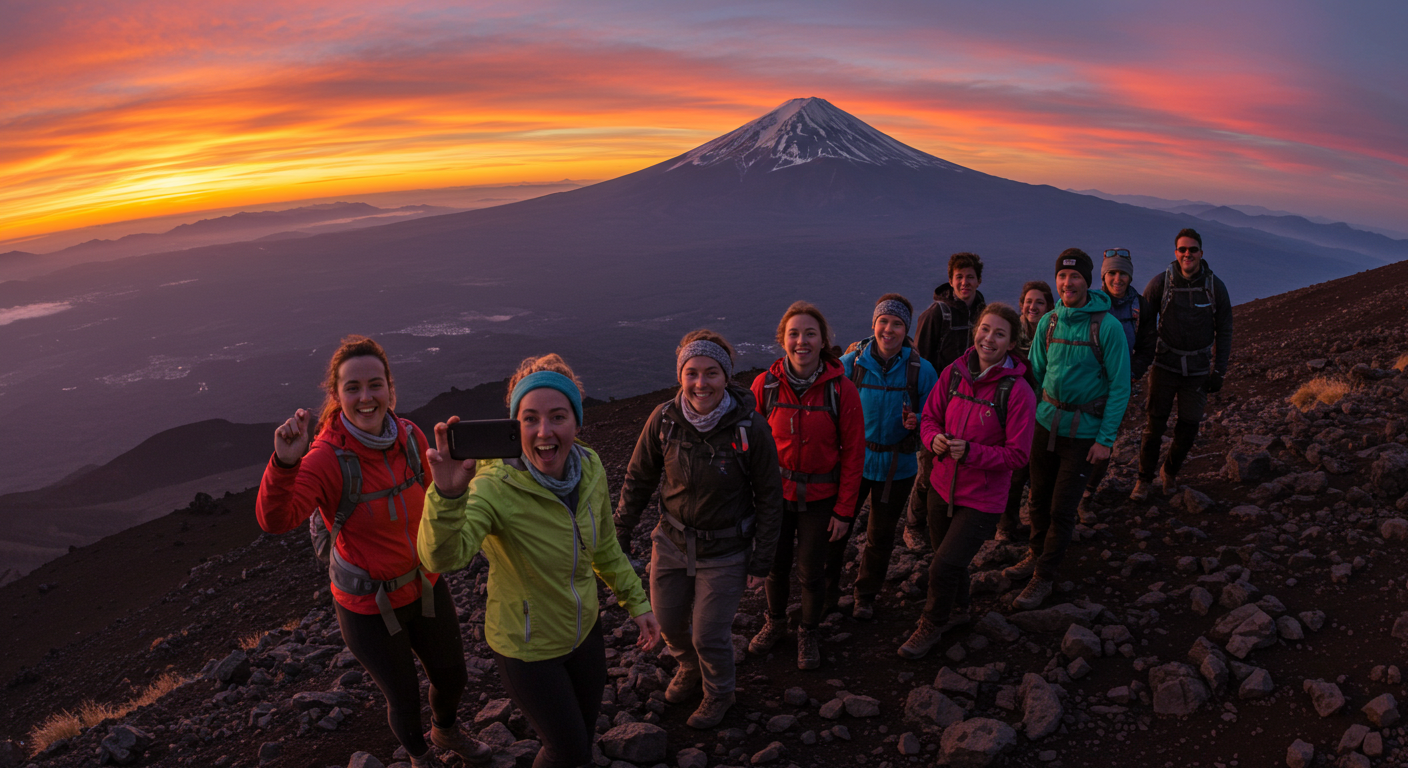
Climbing Mt. Fuji is a bucket-list experience, and having reliable service can come in handy. Both docomo and Softbank offer LTE coverage, even at the summit during climbing season. Whether you’re checking the weather or sharing a summit selfie, you’ll stay connected. au also offers 5G coverage in certain areas of the summit during the climbing season, from early July to late August, using a mobile base station to enhance safety for climbers.
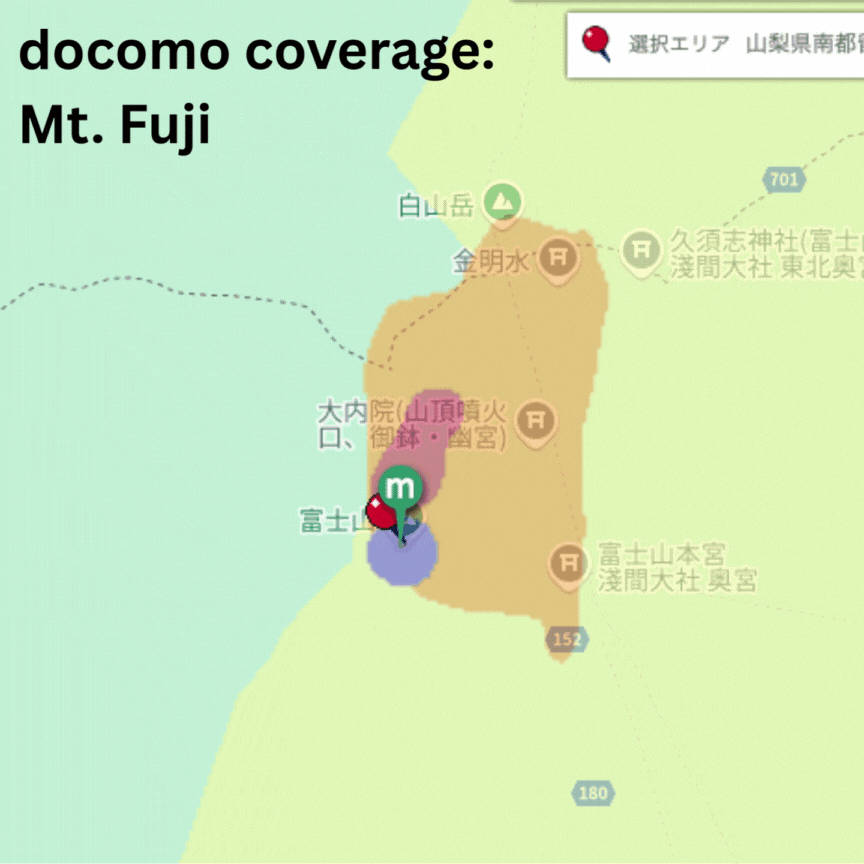
🏞️ Nikko (Tochigi Prefecture) – Nature, Shrines, and Remote Areas
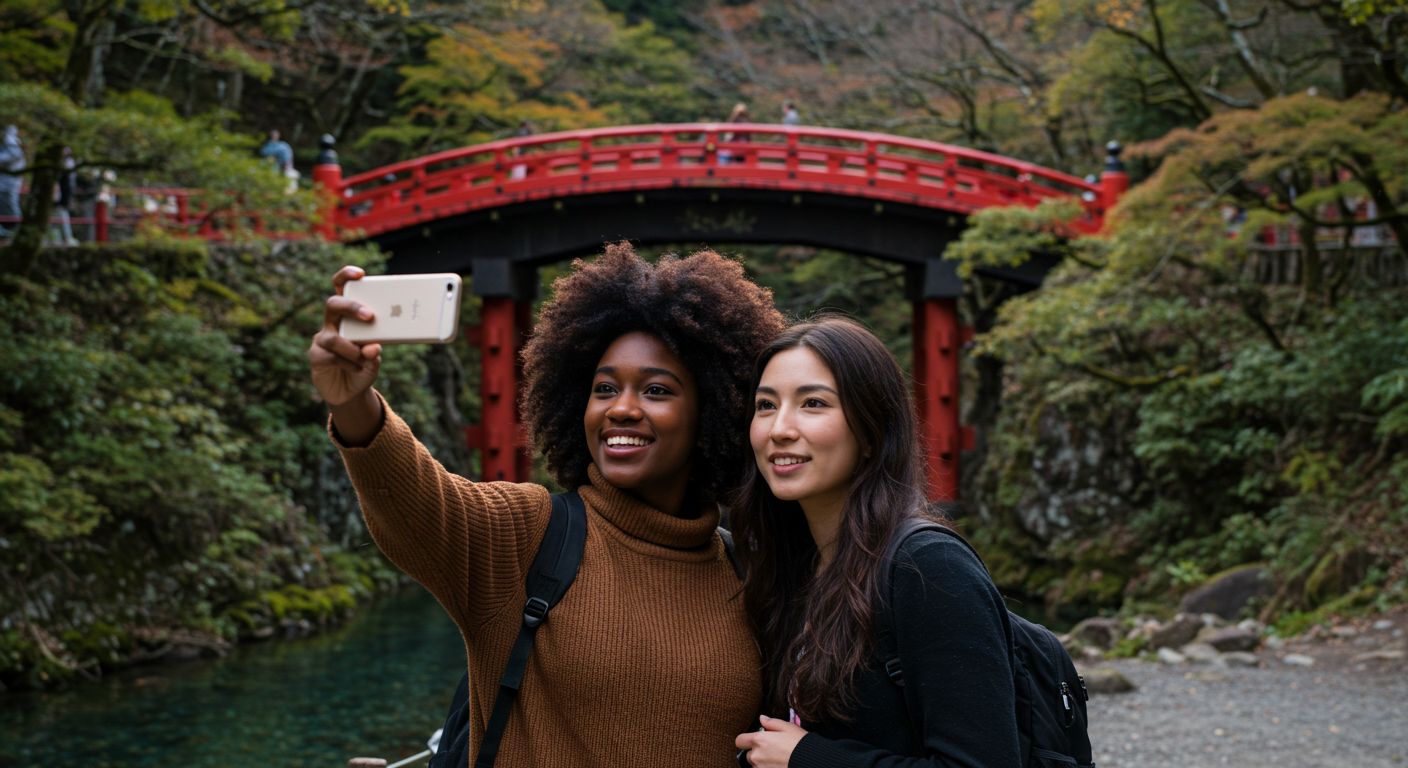 Nikko, with its stunning temples, waterfalls, and hiking trails, is a beautiful yet remote destination. Docomo offers the best coverage through the mountainous terrain and at heritage sites like Toshogu Shrine and Kegon Falls. au by KDDI has expanded its 5G network to Nikko, offering fast and reliable coverage in the main tourist areas, including the temples and waterfalls. While the Softbank signal may be less consistent in more forested or remote locations, such as the hiking trails around Lake Chuzenji, au is continuously improving its network, and coverage is expected to strengthen as its 5G service expands further.
Nikko, with its stunning temples, waterfalls, and hiking trails, is a beautiful yet remote destination. Docomo offers the best coverage through the mountainous terrain and at heritage sites like Toshogu Shrine and Kegon Falls. au by KDDI has expanded its 5G network to Nikko, offering fast and reliable coverage in the main tourist areas, including the temples and waterfalls. While the Softbank signal may be less consistent in more forested or remote locations, such as the hiking trails around Lake Chuzenji, au is continuously improving its network, and coverage is expected to strengthen as its 5G service expands further.
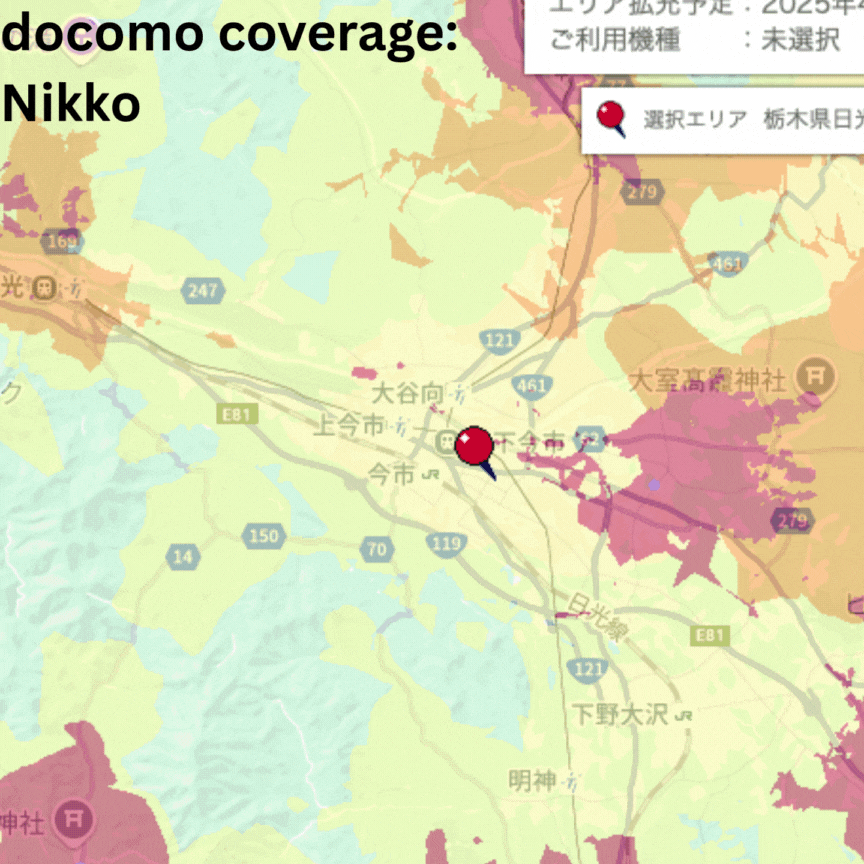
↑ Go back to the table of contents
👉 Order Your Travel SIM, eSIM, or Pocket WiFi Now!

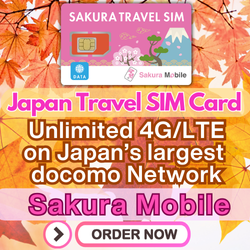
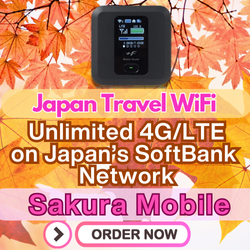
This section highlights places where docomo provides the best coverage, ensuring you stay connected whether you’re sightseeing in the city or exploring Japan’s scenic, rural areas. A docomo-powered SIM card/eSIM or pocket WiFi will keep you covered no matter where your adventures take you. We also offer a new 5G eSIM to give you unlimited coverage all over the country.
🏞️ Itsukushima Shrine (Hiroshima Prefecture) – Scenic Island Coverage
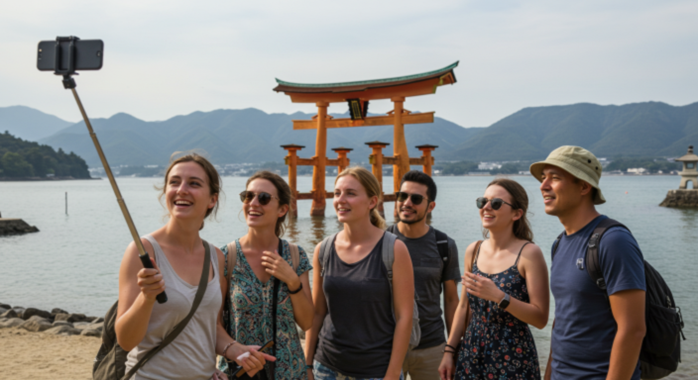
Itsukushima Shrine, located on Miyajima Island near Hiroshima, is one of Japan’s most famous landmarks, known for its iconic floating Torii gate. docomo and Softbank provide solid coverage on the island, ensuring you can easily share photos of the shrine, check tide schedules for the best view of the Torii gate, and even upload your pictures of the local deer. au by KDDI also offers reliable coverage in the main areas of the island, and with their expanding 5G network, you can enjoy fast speeds using our new 5G eSIM plans for a smoother experience. While coverage may not be as extensive in more remote parts of the island, au’s network continues to improve, making your visit even more enjoyable.
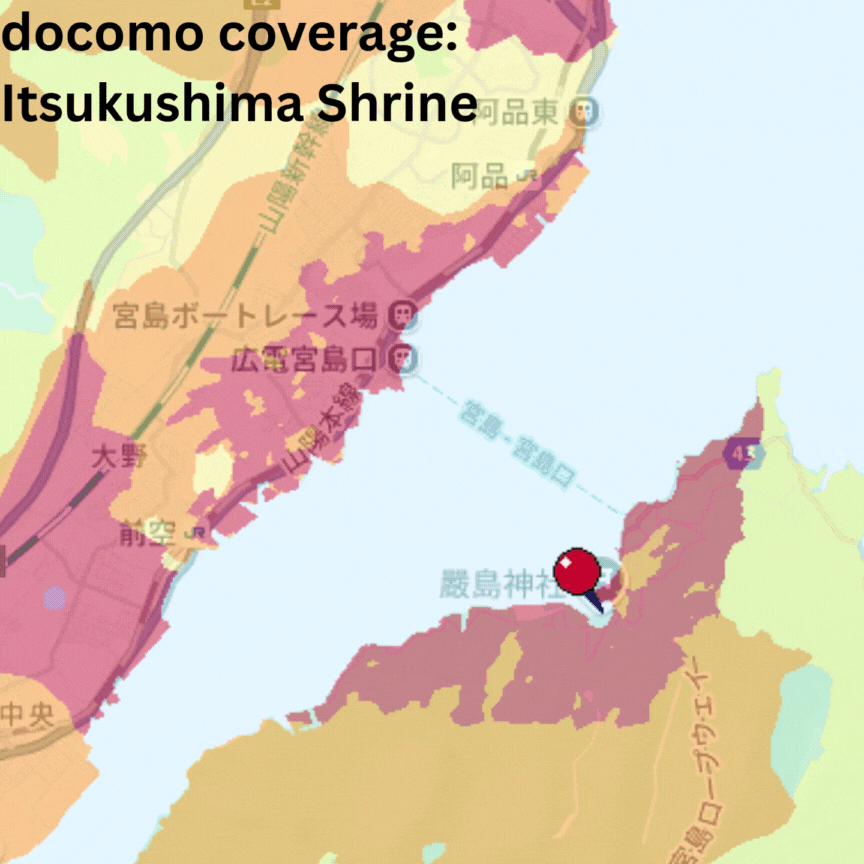
↑ Go back to the table of contents
Why Sakura Mobile Is a Smart Choice for Travelers
When traveling in Japan, staying connected is important—especially if you’re venturing beyond the busy streets of Tokyo. Sakura Mobile makes it easy by offering the best of all worlds: reliable docomo coverage, a new 5G eSIM on the au network, and hassle-free service.
Here’s why it’s a smart choice:
・English Support: Easy setup and troubleshooting in English.
・Reliable docomo and au Networks: Stay connected in major cities and rural areas.
・No Contracts: Prepaid plans—no stress or hidden fees.
・Tourist-Friendly Plans: SIM, eSIM, and pocket WiFi designed for short-term stays.
・Convenient Delivery: Airport, hotel, or express shipping options.
💡 Want to skip the hassle? Order your SIM/eSIM or pocket WiFi before your trip.
Final Tips Before You Choose
Before deciding on your mobile data solution, keep these tips in mind to ensure you’re fully prepared for your trip:
・Unlock Your Phone: Needed for using a local SIM.
・Traveling in a Group? Rent a pocket WiFi for convenience.
・Check Coverage Maps: Compare your destinations with docomo and au’s maps.
・Strong Support Matters: Choose a provider with reliable English support.
💡 Ready to stay connected in Japan stress-free?
👉 Choose Your SIM/eSIM or Pocket WiFi Plan Now!

